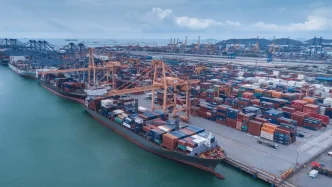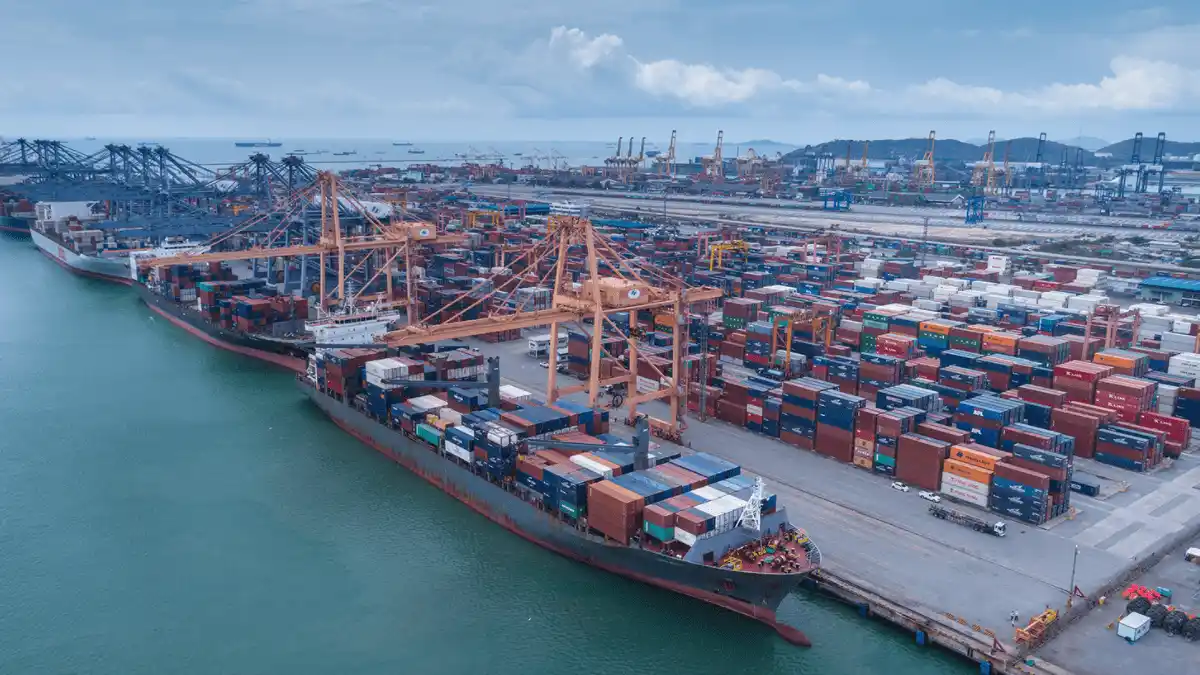Thailand is grappling with a mounting economic crisis following the United States’ announcement of a staggering 36% import tariff on Thai goods, set to take effect on August 1, 2025. The decision, which has sparked fierce criticism of the Thai government’s trade and foreign policy strategies, threatens to destabilize key industries, jeopardize small businesses, and exacerbate geopolitical tensions. As opposition leaders demand accountability and urgent action, the nation braces for what could be an economic downturn more severe than the fallout from the COVID-19 pandemic.
A Devastating Blow to Thai Exports
The US tariff, announced via a post on Truth Social by President Donald Trump, marks a significant escalation in trade tensions between the two nations. Effective from August 1, 2025, the 36% levy will impact a wide range of Thai exports, from agricultural products to jewelry and textiles. This comes at a time when Thailand’s economy is already navigating global uncertainties, with exports forming a critical pillar of its GDP. The tariff rate starkly contrasts with Vietnam, a regional competitor, which secured a lower 20% tariff through proactive negotiations with the US—a disparity that has fueled accusations of governmental inaction in Bangkok.
Julapong Yukate, a list MP from the opposition People’s Party and Vice-Chairman of the House Committee on Commerce and Intellectual Property, confirmed the tariff announcement during a session at Parliament on July 9, 2025. He lambasted the government for what he described as “misguided policies and the complete inefficiency” in handling international trade and foreign affairs. Julapong pointed fingers at the Minister of Finance, accusing them of adopting a passive “wait and see” approach despite repeated warnings from the opposition and the Commerce Committee since President Trump’s inauguration in January 2025. “Therefore, the Minister of Finance has made a severe mistake,” he asserted, highlighting Vietnam’s relative success in negotiations as evidence of Thailand’s failure.
The Minister of Foreign Affairs has not escaped scrutiny either. Julapong criticized their “ineffective and sluggish” role in the negotiation process, noting their absence from key Committee clarifications and inability to travel to the US due to an immigration issue tied to the Uyghur case. This, he argued, has severely hampered Thailand’s diplomatic and trade coordination at a critical juncture.
Opposition Warns of a “Black Hole” in Trade Relations
Adding to the chorus of concern, Veerayooth Kanchoochat, Deputy Leader of the People’s Party, responded to the US announcement by describing it as a “warning sign” of more dangerous challenges ahead. He likened President Trump’s trade strategy to creating a “black hole” that compels trading partners to rush new offers to the US in a bid to mitigate damage. “The game is not yet over, and Thailand has not faced its worst-case scenario,” Veerayooth cautioned during a press briefing on July 9, 2025.
He expressed deep concern over the potential ramifications of conceding too much in negotiations before the August 1 deadline. Beyond lowering import taxes to open Thai markets, such concessions could extend to critical areas like quality control standards, sanitary requirements, and even security policies. Veerayooth warned of a “worst case” where Thailand could “lose both ways”—facing reduced exports while simultaneously increasing imports. This, he argued, would exacerbate the decline in domestic production and weaken Thailand’s geopolitical bargaining power, potentially leaving “economic scars” deeper than those inflicted by the COVID-19 crisis.
Proposals to Mitigate the Fallout
In response to the looming crisis, Veerayooth outlined a series of urgent proposals aimed at shielding Thailand’s economy and its most vulnerable sectors. His four-pronged strategy calls for immediate government action to support at-risk businesses, tackle systemic trade issues, and realign national priorities to weather the storm.
First, he urged proactive assistance for the 4,990 small and medium-sized enterprises (SMEs) identified by the Bank of Thailand as particularly vulnerable to the tariffs. Employing over 500,000 workers, these businesses span industries such as jewelry, agriculture, metal, and textiles—sectors already battered by competition from China and Vietnam, as well as the lingering effects of the pandemic. Veerayooth criticized the inadequacy of “soft loans” as a sole solution, instead advocating for a “mobile medical team” approach to directly address the diverse needs of these skilled entrepreneurs who, he argued, are unfairly bearing the brunt of global trade war shocks.
Second, he called for a “major crackdown” on misdeclared goods using Thailand as a transit point to conceal their true origins—often from banned countries—before re-export to the US. Noting that only 28% of goods exported to the US require a Certificate of Origin, Veerayooth highlighted the ease with which misdeclared items slip through regulatory cracks, with goods worth billions of baht involved. Publicized raids on offending factories, he suggested, would send a strong signal that Thailand will no longer tolerate such practices.
Third, Veerayooth reiterated the People’s Party’s earlier warnings during the 2026 budget debate that traditional budgeting is ill-equipped to handle severe external risks from tourism and trade. With the current 3.78 trillion Thai Baht (~US$105 billion) budget under parliamentary review, he urged a fundamental re-evaluation to align it with the evolving crisis. The budget, he argued, must serve as an “iron rampart” to protect the Thai people during this turbulent period, with clear definitions of how funds will be allocated to absorb the tariff’s impact.
Broader Implications for Thailand’s Economy
The US tariff announcement arrives at a precarious moment for Thailand, a nation whose economy relies heavily on exports, which accounted for approximately 60% of its GDP in recent years. Key sectors such as agriculture, manufacturing, and tourism have been cornerstones of growth, but they now face unprecedented pressure. The jewelry and textile industries, for instance, are not only labor-intensive but also deeply embedded in Thailand’s cultural and economic fabric. A 36% tariff could render these goods uncompetitive in the US market, one of Thailand’s largest export destinations, potentially triggering layoffs and factory closures.
Moreover, the disparity between Thailand’s 36% tariff and Vietnam’s 20% rate underscores a broader regional competition. Vietnam, often seen as a direct rival in attracting foreign investment and export markets, appears to have outmaneuvered Thailand in securing favorable terms with the US. This could further erode investor confidence in Thailand, prompting multinational corporations to shift operations to neighboring countries with more stable trade environments. The ripple effects might extend beyond immediate economic losses, impacting long-term foreign direct investment and Thailand’s standing in global supply chains.
Geopolitical Dimensions and Domestic Pressure
Beyond economics, the tariff crisis carries significant geopolitical weight. Thailand, a longstanding US ally in Southeast Asia, has historically balanced its foreign policy between major powers like the US and China. The current trade friction, compounded by the Foreign Minister’s reported immigration constraints related to the Uyghur case, risks straining this delicate relationship. At a time when regional stability is already tested by issues such as the South China Sea disputes and Myanmar’s ongoing conflict, Thailand’s diminished diplomatic leverage with the US could have broader security implications.
Domestically, the tariff issue has intensified political divisions. The People’s Party, leveraging public discontent, has positioned itself as a champion of economic justice, demanding ministerial resignations and sweeping reforms. Their critique of the government’s “wait and see” approach resonates with a populace weary of perceived inaction, particularly among SME owners and workers in export-dependent regions. As public pressure mounts, the government faces a narrowing window to demonstrate competence and avert a full-blown political crisis alongside the economic one.
Looking Ahead: A Race Against Time
With the August 1, 2025, deadline looming, Thailand stands at a critical crossroads. The government’s response in the coming weeks will likely determine whether the nation can mitigate the worst effects of the US tariff or spiral into a deeper economic quagmire. Opposition proposals, while ambitious, underscore the urgency of innovative policymaking—from direct support for SMEs to stringent measures against trade loopholes and a budget overhaul to prioritize resilience.
Yet, questions remain about the feasibility of these measures in a politically fragmented landscape. Can the government muster the will and resources to negotiate a reduction in the tariff rate without sacrificing too much? Will it heed calls for accountability and reform, or risk further alienating an already frustrated public? As Thailand navigates this uncharted territory, the stakes could not be higher—not just for its economy, but for its geopolitical standing and domestic stability in an increasingly volatile world.















